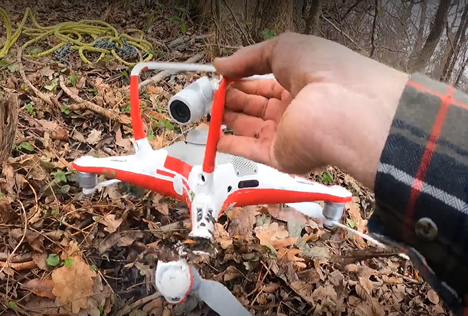Adventures in Aerial Droning


By Rebecca Shoer
Cabot Education and Community Engagement Program Manager
Here at the Stone Living Lab, we love getting into the field. Wading through marshes, peering into tidepools, flying drones – this is the kind of science that excites us and lets us bring our work into the real world. As we develop and monitor climate adaptation strategies, this field time is absolutely critical to our mission. We need to gather information about the actual, present-day conditions in Boston Harbor so we can help our communities make the best decisions about adapting to climate change.
But sometimes, field work can feel a little too exciting, as one of our teams recently discovered! In the last few days of 2021, Research Director Dr. Mark Borrelli’s team went into the field to collect aerial drone footage. This high-resolution imagery provides incredible detail both above ground and underwater, allowing us to see how seasonal change and storms affect the harbor every year. Everything was going along normally until the drone suffered what we call a “catastrophic failure:” it fell out of the sky – and got stuck in a tree!
Without any way to get the drone out of a thirty-foot-high tree branch (shouting general encouragements and positive affirmations at the drone appeared to have no effect), Dr. Borrelli’s team headed home and contacted the Lab’s resident equipment czar Francesco Peri for help. He set out the next day on a rescue and recovery mission. His tools of choice? A slingshot, some rocks, a rope, and (as a last resort) a hand saw. Spoiler alert: Francesco successfully retrieved the drone! But how did he do it?
First, Francesco attached a thin spool of twine to a large metal nut, and then used the slingshot to try and get the twine looped over the top of the branch. But the nut only went a few meters before it fell back to the ground – nowhere near the branch that held our drone captive! As Francesco noted, the force of the nut pulling on the twine was too little to get it high into the air. He needed a much larger weight to launch!
Next up was a larger rock attached to the twine. This time, the forces were in Francesco’s favor, and both rock and twine made it over the tree branch. He then tied on a larger and sturdier rope to the twine, and used his homemade pulley system to pull the rope up over the branch. Now, he had a strong rope looped over the branch. Finally, Francesco used a highly technical procedure to get the drone, “shake-the-branch-until-the-drone-comes-down,” and it was a success!
Unfortunately, the drone suffered some damage in its return to earth. Most importantly, however, we were able to recover the data collected by the drone during its final flight! Back at the UMass Boston campus, Francesco worked on finding out what exactly had gone wrong in the air. From what he can tell, one of the drone propellers stopped spinning mid-flight, sending the drone plunging to its arboreal prison. The damage is likely irreparable, and a new drone is on its way.

Francesco holding the damaged drone.
Science is all about asking questions, solving problems, thinking creatively, and making discoveries. And as we know at the Lab, these skills aren’t reserved for the classroom or inside a laboratory – we use them every day in the field. By working together across teams and disciplines, we can advance our field, help our communities, and rescue our equipment! Dr. Borrelli’s team is already working on analyzing the new data collected by their drone, and Francesco’s drone-recovery toolkit will be waiting, ready to jump into action – hopefully, not for awhile yet.